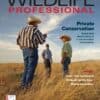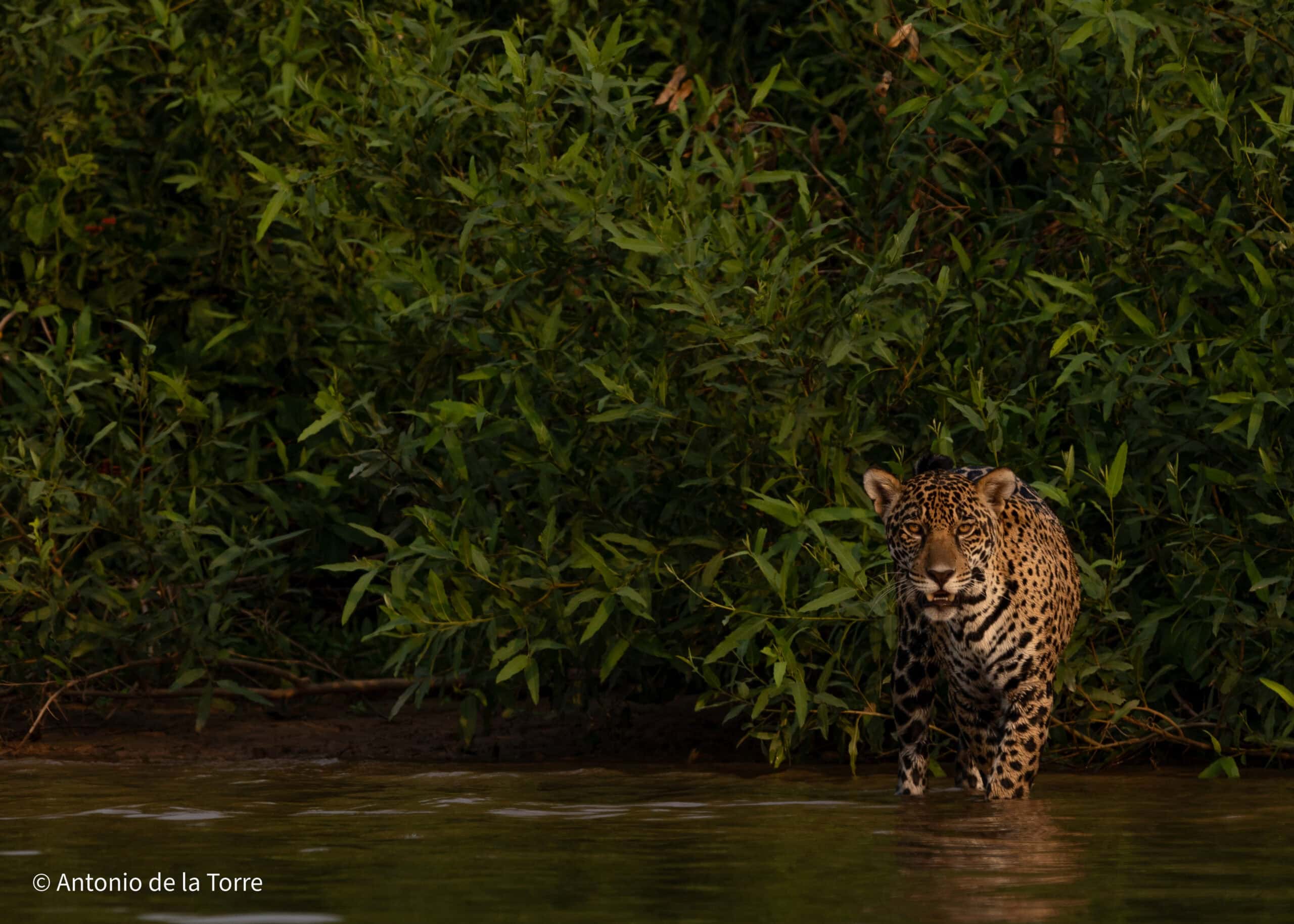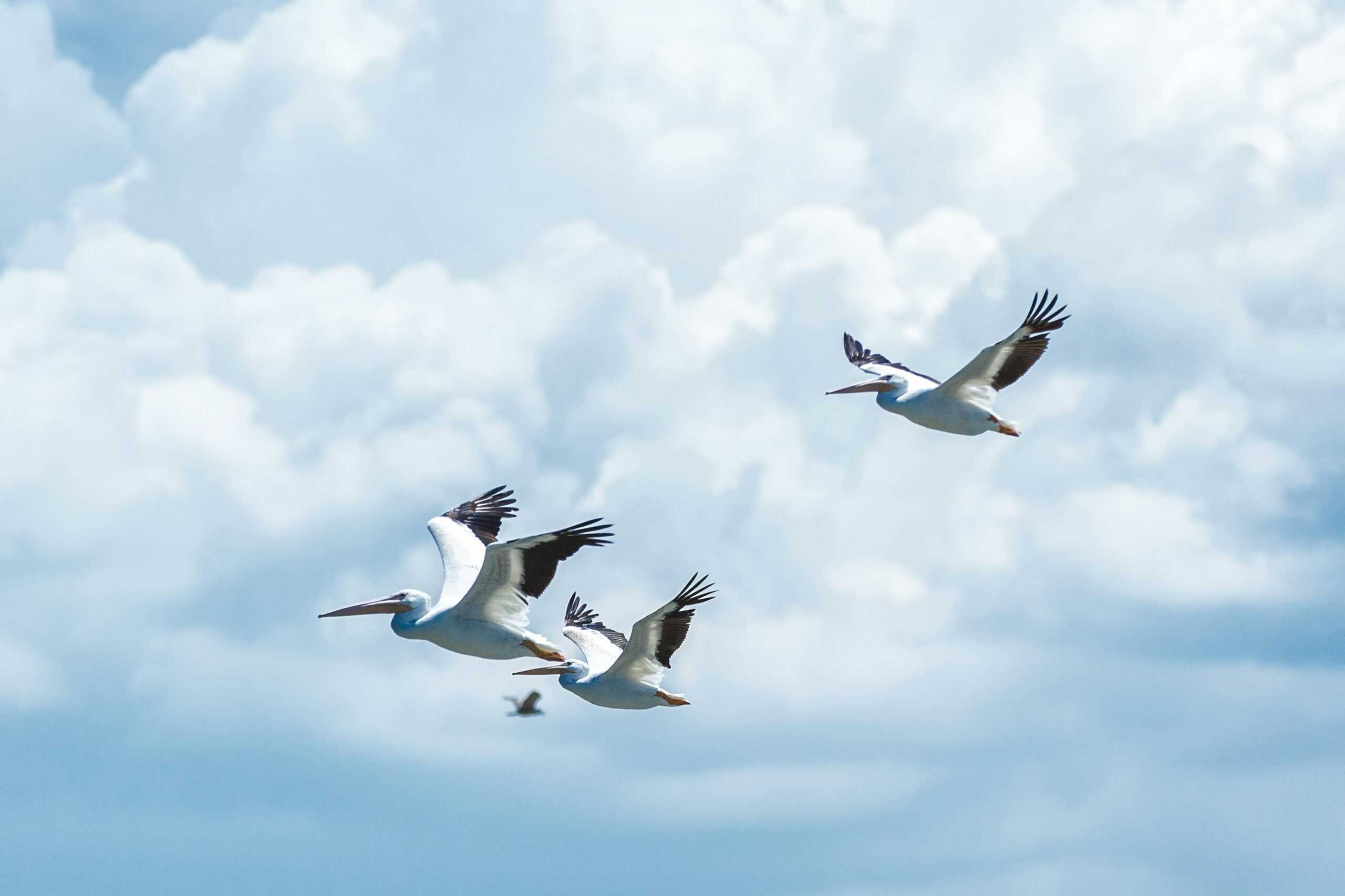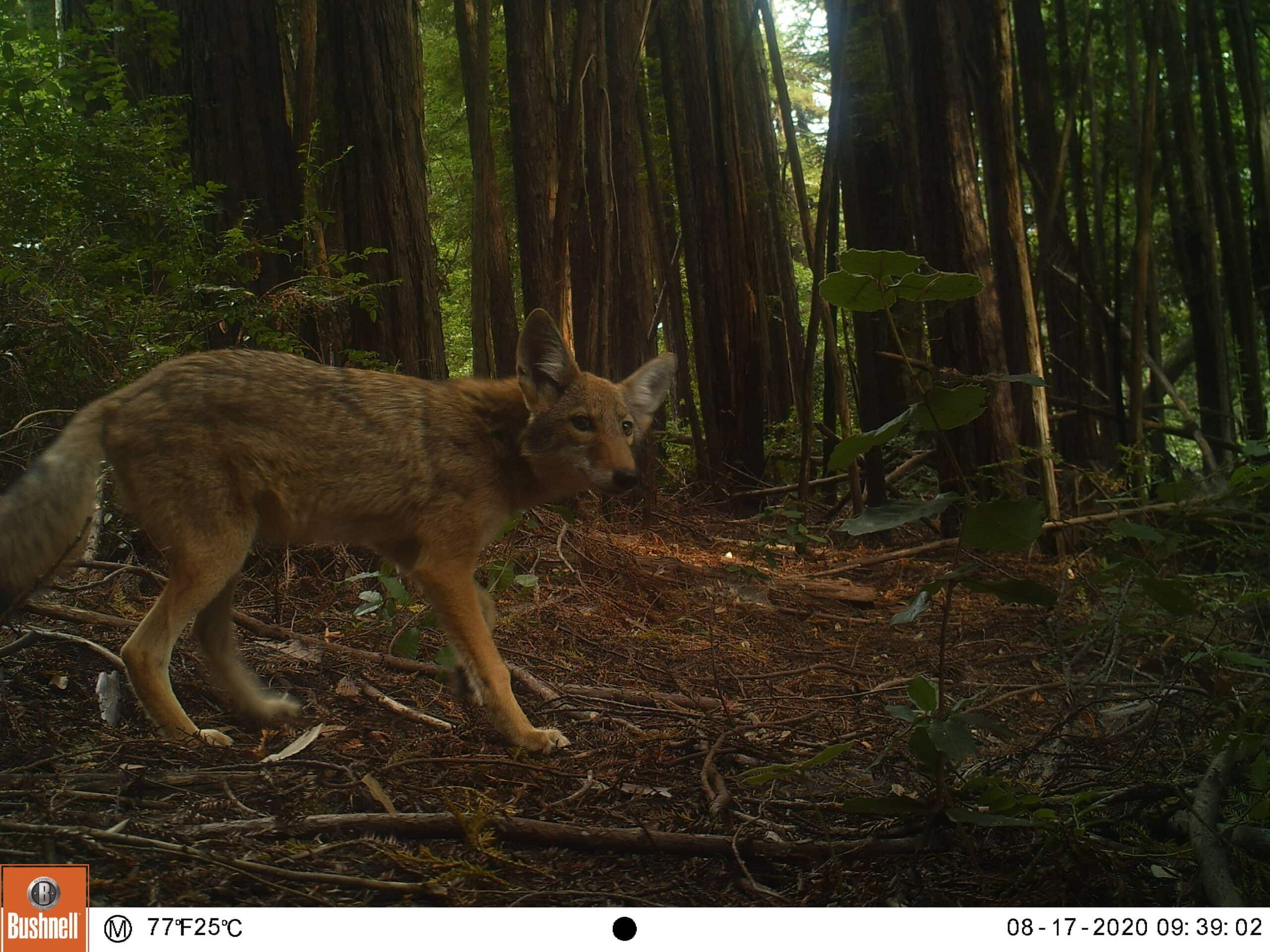Share this article
JWM: Water holes could be pathogen hotspots for Cape buffalo
Cape buffalo could be contracting pathogens when they gather at water holes during the dry season in South Africa’s Kruger National Park, and biologists worry the problem will worsen with climate change.
Researchers wanted to track how Cape buffalo (Syncerus caffer caffer) might be transmitting diseases like brucellosis, Rift Valley fever and tuberculosis. These diseases, and past outbreaks of rinderpest, have combined with other factors like poaching and habitat loss and degradation to create problems for the buffalo.
“The Cape buffalo is considered an important reservoir host for many pathogens,” said Elodie Wielgus, a postdoctoral researcher at the Bavarian Forest National Park in Germany and the lead author of a study published recently in the Journal of Wildlife Management. Aside from causing problems for the buffalo themselves, these pathogens can be transmitted to domestic livestock and even humans.
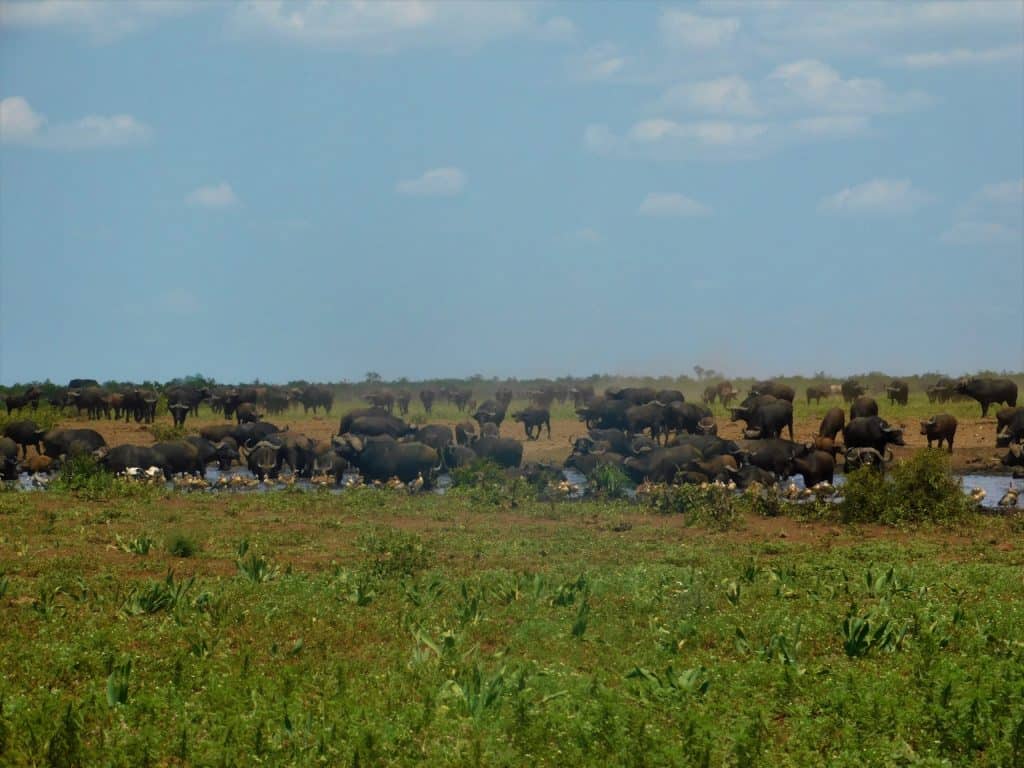
Cape buffalo crowd around water in Kruger National Park in South Africa. Credit: Elodie Wielgus
Cape buffalo are found widely across southern and eastern Africa. They move in herds sometimes numbering as much as 1,500 individuals, grazing on grasses and other plants.
Wielgus was a PhD student at Manchester Metropolitan University in the U.K. and the French Agricultural Research Center for International Development (CIRAD) at the time of the research. He used data that had been collected by other researchers using tracking collars on Cape buffalo in Kruger National Park near communal cattle ranching lands across the border in Zimbabwe and in the Okavango Delta in Botswana. In each population, the researchers analyzed when collared animals from one herd most often came into contact with those of other herds, using it as a proxy for estimating disease transmission.
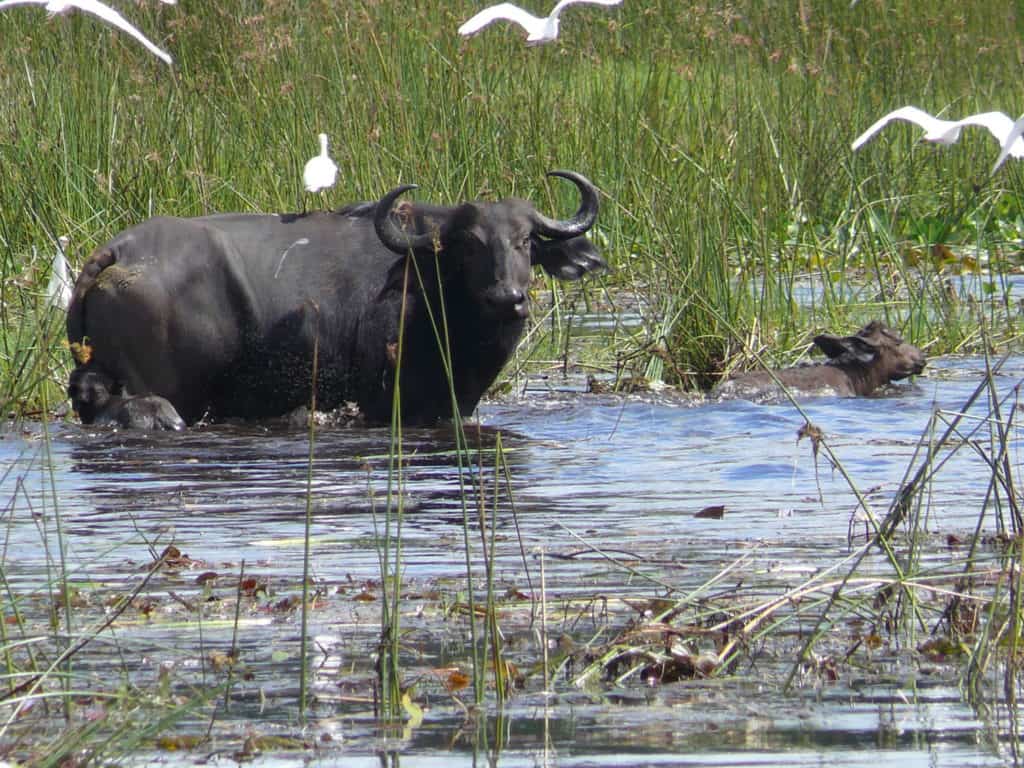
Cape buffalo typically have a lot more water sources in the Okavango Delta in Botswana. Credit: Emily Bennitt
They found that most buffalo herds never crossed paths. Buffalo wouldn’t even approach areas that other herds had used two days earlier. When they did cross paths, their meetings tended to be brief. But buffalo may not have to meet to spread the disease, Wielgus said. They might pick up pathogens through affected soil or water.
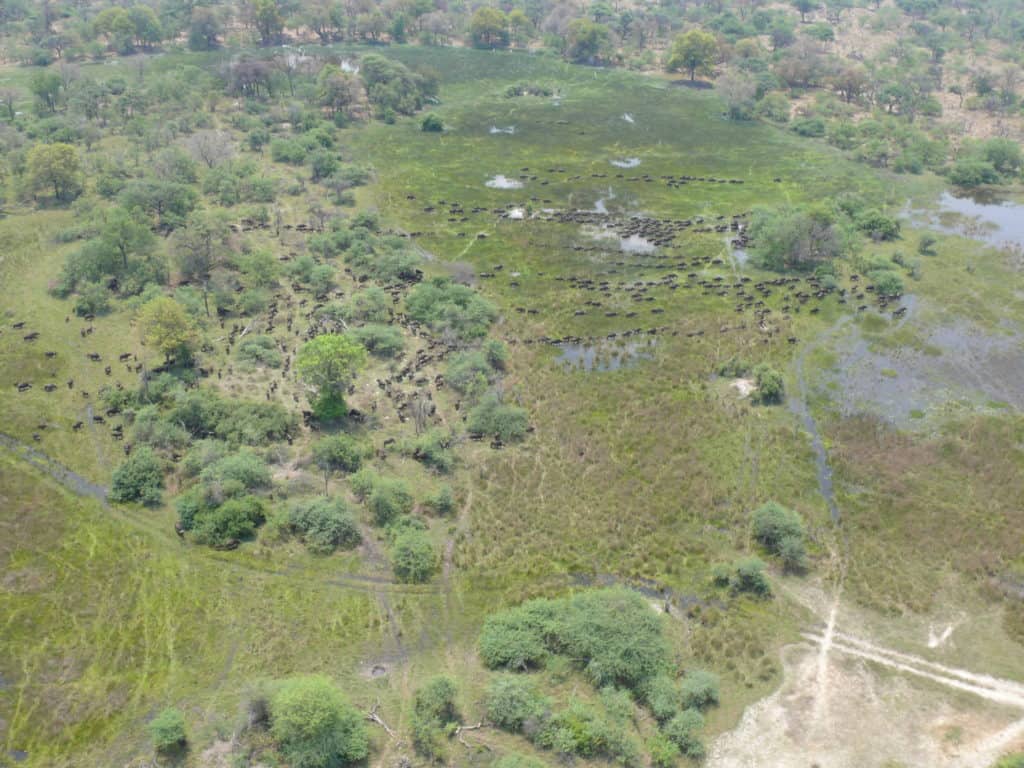
A Cape buffalo herd crossing water. Credit: Emily Bennitt
The risk grows during the dry season, when buffalo groups coalesce around a few water holes. These presented the most likely seasonal disease transmission hotspots, Wielgus and her colleagues found. It’s not an issue in the Okavango Delta, where water is abundant, Wielgus said, but Kruger is much drier, and climate change will likely make it even more so.
“With climate change we can expect a reduction of water availability, so we can also expect the transmission of pathogens will increase,” Wielgus said.
This study can help inform researchers about diseases spread in Cape buffalo populations, Wielgus said. To reduce the spread of transmission where buffalo are likely to come across cattle, managers could consider adding artificial water holes during dry seasons, she said.
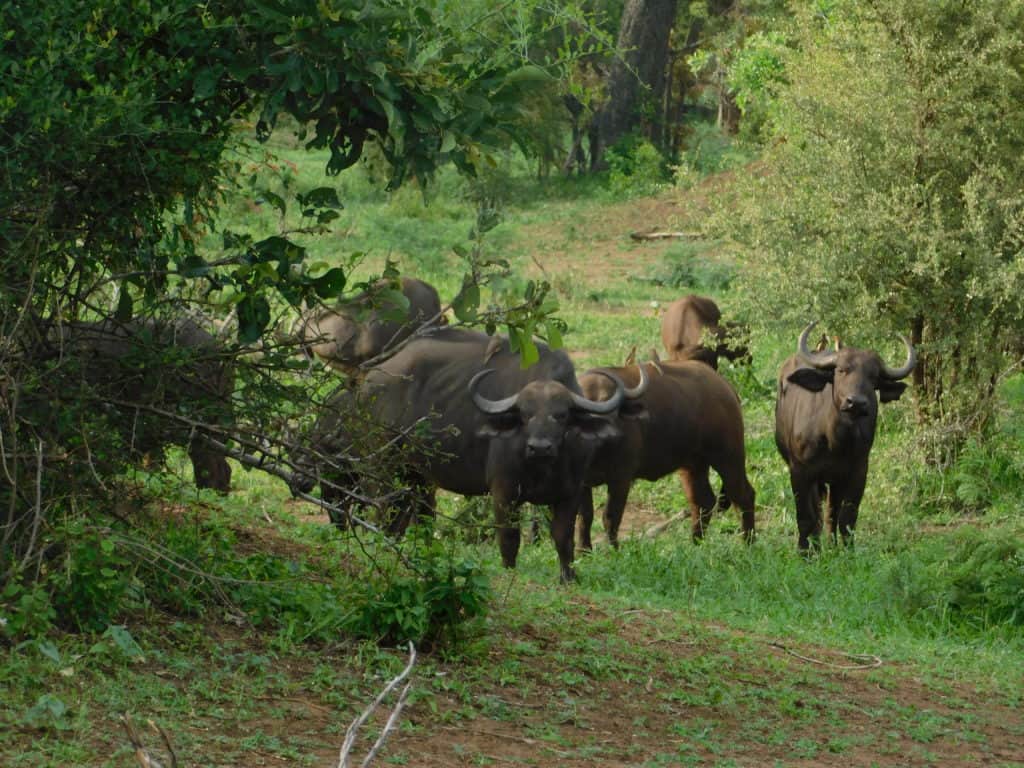
Female Cape buffalo in Kruger National Park in South Africa. Credit: Elodie Wielgus
This article features research that was published in a TWS peer-reviewed journal. Individual online access to all TWS journal articles is a benefit of membership. Join TWS now to read the latest in wildlife research.
Header Image: Some Cape buffalo were collared, allowing researchers to track when herds might coalesce in southern Africa. Credit: Daniel Cornelis

